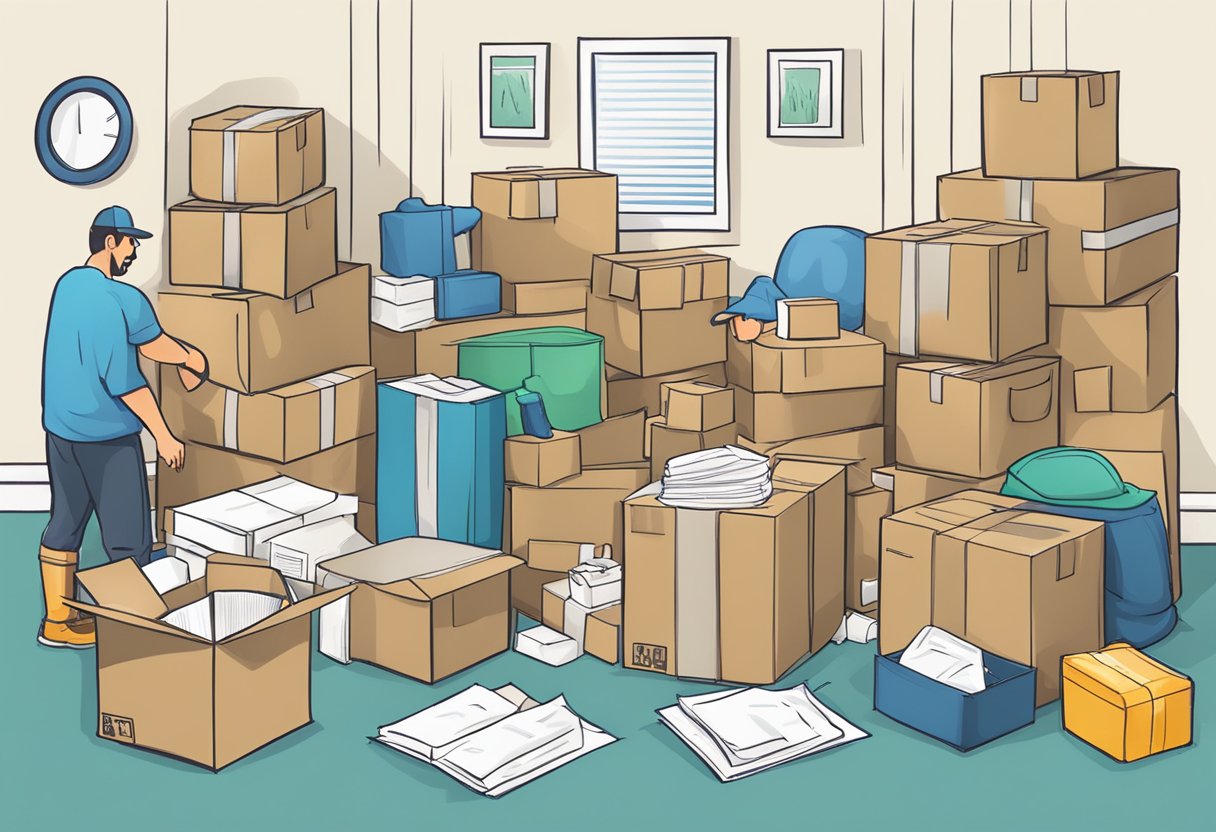
Packing Tips for Moving: Expert Advice to Make Your Move Easier
Moving to a new home can be an exciting experience, but it can also be a stressful one. One of the most challenging parts of moving is packing your belongings. Knowing how to pack properly can make the process much smoother and less overwhelming. In this article, we will provide you with some packing tips for moving that will help you get organized and protect your items during the move.
When it comes to packing for a move, the key is to start early. Don’t wait until the last minute to begin packing; this will only add to your stress levels. Instead, start several weeks before your move date and work on packing a little bit each day. This will help you avoid the rush of trying to pack everything in a few days.
Another important tip is to declutter before you start packing. Moving is the perfect opportunity to get rid of items you no longer need or use. Go through your belongings and separate them into piles of things to keep, donate, or throw away. This will make packing easier and help you start fresh in your new home.
Understanding the Basics of Packing Tips for Moving

When it comes to moving, packing can be one of the most time-consuming and stressful tasks. However, understanding the basics of packing can make the process much smoother and less daunting.
Firstly, it’s important to have a plan in place before you begin packing. This will help ensure you don’t forget anything important and pack efficiently. Consider creating a packing checklist to keep track of what you’ve packed and what still needs to be packed.
Next, gather all the necessary packing supplies, such as boxes, tape, bubble wrap, and packing paper. You can find these supplies at various retailers, such as U-Haul. It’s important to use sturdy boxes that are appropriate for the items you’re packing. For example, use smaller boxes for heavier items and larger boxes for lighter items.
When packing, start with items you won’t need immediately, such as seasonal clothing or decorations. Use packing paper or bubble wrap to protect fragile items and fill any empty space in the boxes with packing material to prevent items from shifting during transit.
Label each box with its contents and the room it belongs in. This will make it easier to unpack and organize your new space. Consider color-coding your boxes by room to make it even easier to identify where each box belongs.
Understanding the basics of packing and following these tips can make the packing process much more manageable and less stressful.
Choosing the Right Packing Materials
When it comes to packing for a move, choosing the right packing materials is crucial to ensure that your belongings arrive at your new home safely. Here are some tips to help you choose the right packing materials:
Types of Packing Materials
Many different types of packing materials are available, each with its advantages and disadvantages. Some of the most common types of packing materials include:
- Bubble wrap: Bubble wrap is a great option for protecting fragile items such as glassware and electronics.
- Packing tape: Packing tape is essential for securing boxes and other items during the move.
- Packing paper: Packing paper is a versatile packing material that can be used to wrap items or fill empty spaces in boxes.
- Foam: Foam is another excellent option for protecting fragile items, particularly those with irregular shapes.
- Furniture pads: Furniture pads are thick, padded blankets that can be used to protect furniture during the move.
Choosing the Right Boxes
Choosing the right boxes is just as important as choosing the right packing materials. Here are some tips to help you choose the right boxes:
- Right size boxes: Make sure to choose boxes that are the right size for your items. Using boxes that are too large can lead to items shifting during the move while using boxes that are too small can lead to items being crushed.
- Cardboard boxes: Cardboard boxes are a popular choice for moving, as they are affordable, durable, and widely available.
- Plastic totes: Plastic totes are another option for moving, as they are sturdy and can be reused for storage after the move.
- Free moving boxes: Check with local stores or online marketplaces for free moving boxes, which can save you money on packing supplies.
By choosing the right packing materials and boxes, you can help ensure that your move goes smoothly and your belongings arrive at your new home in one piece.
Packing Specific Items
When it comes to packing specific items, it’s important to take extra care to ensure they arrive safely at your new home. Here are some tips for packing different types of items:
Packing Books
Books can be heavy and difficult to move, but with the right packing materials, you can keep them safe and organized. Here’s how:
- Pack books in small boxes to avoid them becoming too heavy to lift.
- Use packing paper or bubble wrap to protect the covers and spines of your books.
- Pack books spine-down to prevent damage to the covers.
- Fill any empty space in the box with packing paper or bubble wrap to keep the books from shifting during transport.
Packing Kitchen Items
The kitchen is often the most challenging room to pack, but you can get it done efficiently and safely with the right approach. Here are some tips:
- Pack dishware, glassware, and stemware in small boxes with plenty of packing paper or bubble wrap to cushion them during transport.
- Use dish towels or packing paper to wrap individual items to prevent them from chipping or breaking.
- Consider using plastic wrap to secure the lids of pots and pans to prevent them from coming loose during transport.
- Pack heavier items, like appliances, in their original boxes if possible.
Packing Fragile Items
Fragile items like dishes, glassware, and breakables require extra care when packing. Here’s how to do it right:
- Wrap each item individually in packing paper or bubble wrap.
- Use packing peanuts or crumpled packing paper to fill any empty space in the box and prevent items from shifting during transport.
- Label the box as “fragile” and mark it as “up” to indicate which end should be facing up during transport.
Packing Clothes
Packing clothes can be straightforward, but there are a few things to keep in mind to make the process smoother:
- Pack hanging clothing in wardrobe boxes to prevent wrinkling or damaging.
- Use garbage bags to pack clothes that are already folded or don’t need to be hung up.
- Pack shoes in their original boxes or in small boxes with packing paper or bubble wrap to protect them during transport.
Packing Valuables
Valuables like jewelry, important documents, and family heirlooms should be packed with extra care to ensure they arrive safely. Here’s how:
- Pack valuables in a small box that can be easily carried with you during the move.
- Use packing paper or bubble wrap to protect delicate items like jewelry and family heirlooms.
- Consider packing important documents in a waterproof container to protect them from moisture during transport.
By following these tips, you can confidently pack your specific items and ensure they arrive safely at your new home.
Preparing for Moving Day
Moving day can be stressful, but you can make the process smoother with some preparation. Here are some tips to help you prepare for moving day.
Purging Unnecessary Items
Before you start packing, it’s a good idea to go through your belongings and get rid of anything you no longer need. This can help reduce the amount of stuff you need to pack and make unpacking easier. Consider donating or selling items that are still in good condition, and throw away anything that is broken or no longer usable.
Creating an Inventory
Creating an inventory list can help you keep track of your belongings and ensure that nothing gets lost during the move. Make a list of all the items you’re packing, and label each box with a number that corresponds to the item on your inventory list. This can also help you unpack more efficiently.
Labeling Boxes
Labeling boxes can help you stay organized during the move. Use a marker to write the contents of each box on the outside, along with the room it belongs in. This can help you and your movers know where each box should go in your new home.
Packing the Moving Truck
When it’s time to pack the moving truck, start with the heaviest items, such as furniture and appliances. Use furniture dollies to move heavy items, and make sure everything is secured in the truck. Pack boxes tightly to prevent them from shifting during transit.
Remember to pack an essentials box with items you’ll need on your first night in your new home, such as toiletries, bedding, and a change of clothes. And don’t forget to have a moving checklist to help you stay on track throughout the process.
Following these tips can make moving day easier and less stressful. Whether you’re moving on your own or with the help of a professional moving company, good logistics, and organization can make all the difference.
Post-Move Tips
Congratulations! You’ve made it to your new home. Now it’s time to start unpacking and settling in. Here are some tips to help you make the most of your post-move experience.
Unpacking Tips
Unpacking can be overwhelming, but it can be a breeze with a little planning. Start by unpacking essentials such as bedding, toiletries, and kitchen items. Then, move on to the rest of your belongings. Here are some additional tips to help you unpack efficiently:
- Sort your items by room and label your boxes accordingly.
- Unpack one room at a time to avoid getting overwhelmed.
- Break down boxes as you go to keep your space organized.
- Donate or sell items you no longer need or want.
Managing Utilities and Budget
Now that you’re settled in, managing your utilities and budget is important. Here are some tips to help you stay on track:
- Contact your utility companies to transfer or set up services.
- Set a budget for your monthly expenses and stick to it.
- Consider using a food bank or other resources if you’re struggling financially.
- Take advantage of discounts and promotions offered by your utility providers.
By following these tips, you’ll be able to enjoy your new home and get settled in no time.
Luxury Specialist at McGraw Realtors
With a diverse background, including a career as an Air Force fighter pilot and entrepreneurship, Bill transitioned to real estate in 1995. Co-founding Paradigm Realty with his wife, Charlene, he quickly rose to prominence in Oklahoma City’s luxury real estate scene. Now, as one of the top agents with annual sales surpassing $20 million, Bill’s dedication to exceptional service remains unparalleled. With a legacy spanning over two decades in the industry, Bill’s expertise and commitment make him a trusted name in luxury real estate.